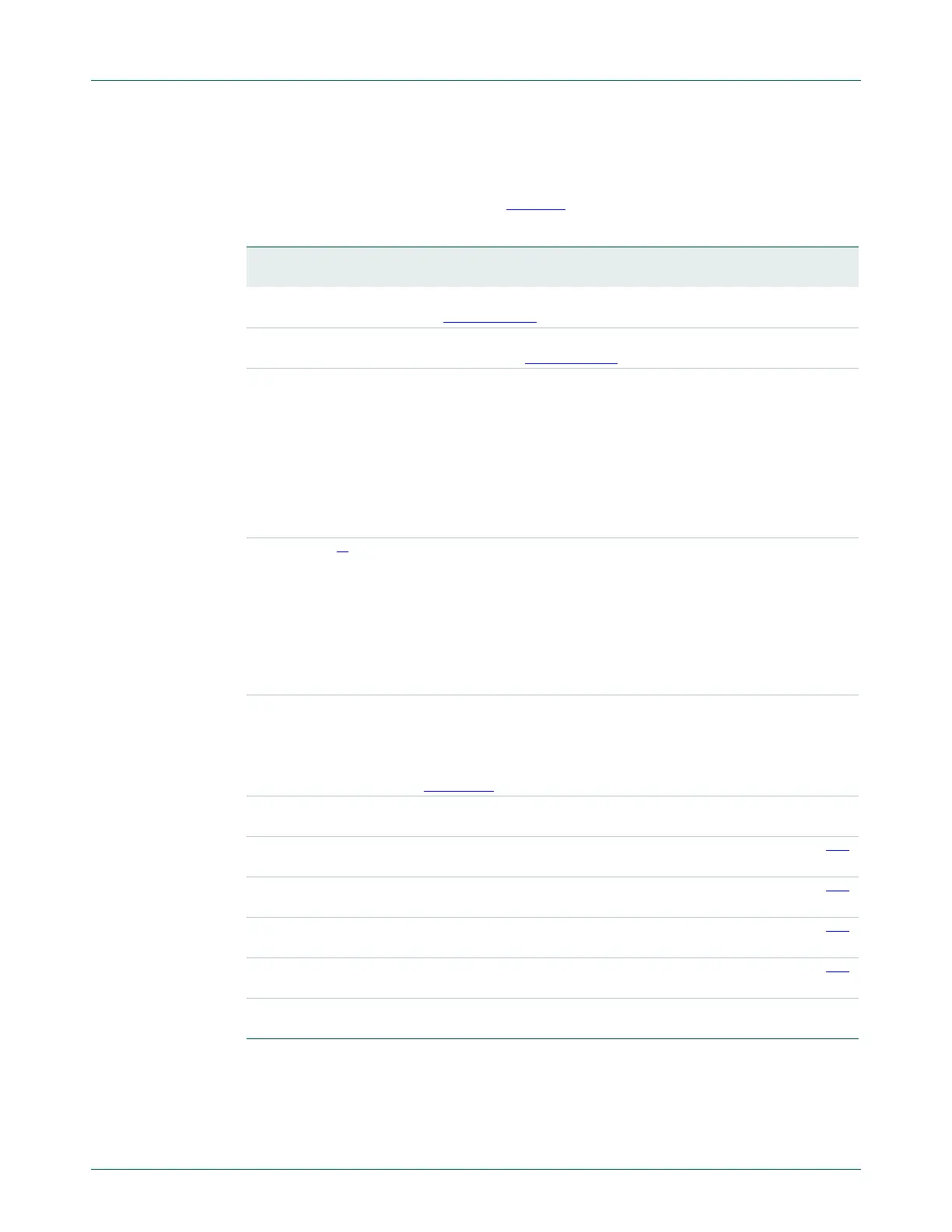UM10360 All information provided in this document is subject to legal disclaimers. © NXP B.V. 2013. All rights reserved.
User manual Rev. 3 — 19 December 2013 62 of 841
NXP Semiconductors
UM10360
Chapter 4: LPC176x/5x Clocking and power control
4.8.7 Power Mode Control register (PCON - 0x400F C0C0)
Controls for some reduced power modes and other power related controls are contained
in the PCON register, as described in Table 44
.
[1] BOD reset (BORD- bit 4 in PCON register) and BOD interrupt needs to be disabled before a user disables
or enables the power to BOD (BOGD - bit 3 in PCON register).
[2] Only one of these flags will be valid at a specific time.
[3] Hardware reset only for a power-up of core power or by a brownout detect event.
[4] Hardware reset only for a power-up event on Vbat.
Table 44. Power Mode Control register (PCON - address 0x400F C0C0) bit description
Bit Symbol Description Reset
value
0 PM0 Power mode control bit 0. This bit controls entry to the Power-down
mode. See Section 4.8.7.1
below for details.
0
1 PM1 Power mode control bit 1. This bit controls entry to the Deep
Power-down mode. See Section 4.8.7.1
below for details.
0
2 BODRPM Brown-Out Reduced Power Mode. When BODRPM is 1, the
Brown-Out Detect circuitry will be turned off when chip Power-down
mode or Deep Sleep mode is entered, resulting in a further reduction
in power usage. However, the possibility of using Brown-Out Detect as
a wake-up source from the reduced power mode will be lost.
When 0, the Brown-Out Detect function remains active during
Power-down and Deep Sleep modes.
See the System Control Block chapter for details of Brown-Out
detection.
0
3BOGD
[1]
Brown-Out Global Disable. When BOGD is 1, the Brown-Out Detect
circuitry is fully disabled at all times, and does not consume power.
When 0, the Brown-Out Detect circuitry is enabled.
See the System Control Block chapter for details of Brown-Out
detection.
Note: the Brown-Out Reset Disable (BORD, in this register) and the
Brown-Out Interrupt (xx) must be disabled when software changes the
value of this bit.
0
4 BORD Brown-Out Reset Disable. When BORD is 1, the BOD will not reset
the device when the V
DD(REG)(3V3)
voltage dips goes below the BOD
reset trip level. The Brown-Out interrupt is not affected.
When BORD is 0, the BOD reset is enabled.
See the Section 3.5
for details of Brown-Out detection.
0
7:3 - Reserved, user software should not write ones to reserved bits. The
value read from a reserved bit is not defined.
NA
8 SMFLAG Sleep Mode entry flag. Set when the Sleep mode is successfully
entered. Cleared by software writing a one to this bit.
0
[2][3]
9 DSFLAG Deep Sleep entry flag. Set when the Deep Sleep mode is successfully
entered. Cleared by software writing a one to this bit.
0
[2][3]
10 PDFLAG Power-down entry flag. Set when the Power-down mode is
successfully entered. Cleared by software writing a one to this bit.
0
[2][3]
11 DPDFLAG Deep Power-down entry flag. Set when the Deep Power-down mode
is successfully entered. Cleared by software writing a one to this bit.
0
[2][4]
31:12 - Reserved, user software should not write ones to reserved bits. The
value read from a reserved bit is not defined.
NA
